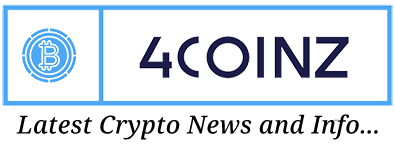As we push towards Web3 mass adoption, there has been a major emphasis on educating crypto traders. While a solid start, we could have a more lasting impact if we also focus on education through the workforce.
In the late 1990s and early 2000s, companies began moving away from outdated operational technology and embracing the benefits of the World Wide Web and email en masse. Transitioning from fax to email and filing cabinets to cloud storage, those who lived through this technological revolution can remember the arduous onboarding and clunky changeover. Over recent years, employees across all industries have been keeping up with the rapid changes taking place, such as incorporating instant messaging, generative AI, time tracking, multi-factor authentication — the list is endless. But we are so eager to forget the lessons learned and our impressive agility when applying it to Web3, which in turn has neglected the growing gap between Web3 novices and Web3 experts, as well as those interested and those skeptical of the budding industry.
You’re reading Crypto Long & Short, our weekly newsletter featuring insights, news and analysis for the professional investor. Sign up here to get it in your inbox every Wednesday.
Until recently, Web3 felt like a niche interest. If you didn’t work for a blockchain protocol, you were relatively insulated from the industries’ happenings. But now, as mass adoption of Web3 technology quickly approaches, it’s becoming less of a vertical, spanning its wings across all industries with everyone needing to get on board and up to speed.
The key isn’t just to focus on onboarding customers; it’s also about successfully equipping employees with the knowledge and tools they need to thrive in this decentralized era. Companies have invested so much on education with a focus on trading, but have not turned their attention to the portion of the workforce that remains unfamiliar with the technology that will be responsible for creating, facilitating, communicating and operating Web3 products and services.
By 2030, the blockchain market is projected to reach a staggering $1.4 trillion, indicating that decentralized technologies are rapidly becoming essential infrastructure across industries. As Web3 begins to saturate the market like Web2 once did, companies have to start closer to home when it comes to education.
According to LinkedIn’s 2023 Jobs Report, blockchain skills saw a 300% increase in demand year-over-year. However, the talent pool remains focused on technical roles, leaving a significant gap in positions requiring non-technical Web3 knowledge such as sales, marketing, HR, communications, and business administration.
Consider the various operational shifts Web3 demands. Data management, for example, transitions from centralized databases to blockchain-based decentralized ledgers, requiring employees to understand distributed storage and encryption protocols. Similarly, the shift from traditional digital identity verification to self-sovereign identities necessitates a rethinking of how companies manage user data. Even marketing and communications techniques are shifting away from social and traditional media.
These changes are inevitable, but many companies are struggling to keep up with the rate of change or are apprehensive to dive in head first, due to a lack of current internal knowledge and knowledge within external talent pools.
Rather than waiting for the perfect hire who has been entrenched in Web3 since its inception, companies should invest in upskilling their existing workforce. A poll from a 2023 study by Casper Labs showed that over 87% of businesses were looking to invest in and incorporate Web3 solutions into their business models.
To bolster the next generation of talent and prepare current employees for the transition, companies need to take action as soon as possible. In the immediate term, creating internal positions for Web3 educators is one pathway for companies to begin their integration. This means hiring people who already have a specific Web3 background to educate current employees, or budgeting for courses and third-party vendors for the purpose of Web3 education.
On a longer-term trajectory, we need to go further back. This could mean facilitating partnerships with educational institutions to develop Web3-focused curricula in universities that could proactively start filling the talent gap, ensuring a steady pipeline of qualified candidates. On a grander scale, pre-collegiate education on the blockchain industry can also be a valuable resource, the same way basic coding classes are becoming a standard in secondary schools across the globe.
With Web3 technology now influencing all industries across a multitude of roles, companies that want to remain competitive must build internal teams that can bridge the gap between traditional business functions and Web3 ecosystems.
The transition to Web3 in the workforce is taking place at this very moment but it won’t be seamless without a concerted effort from businesses, educational institutions, and policymakers. It is our responsibility as Web3 evangelists to ensure that all new and potential workforce members are equipped with the right tools and education to enter the space. Together, these stakeholders can build a robust Web3 education pipeline, ensuring that the workforce is ready for the decentralized future.
Note: The views expressed in this column are those of the author and do not necessarily reflect those of CoinDesk, Inc. or its owners and affiliates.

